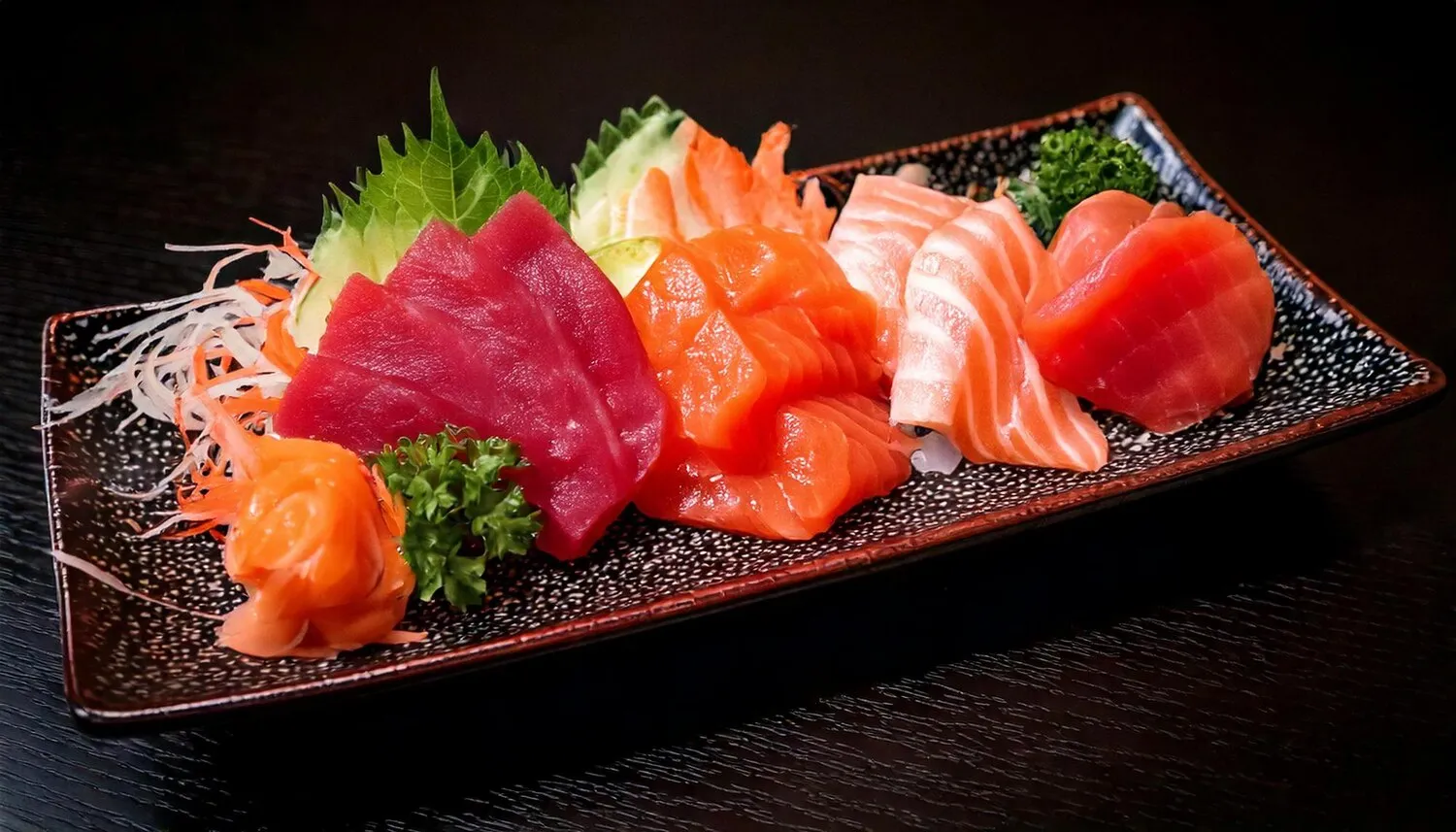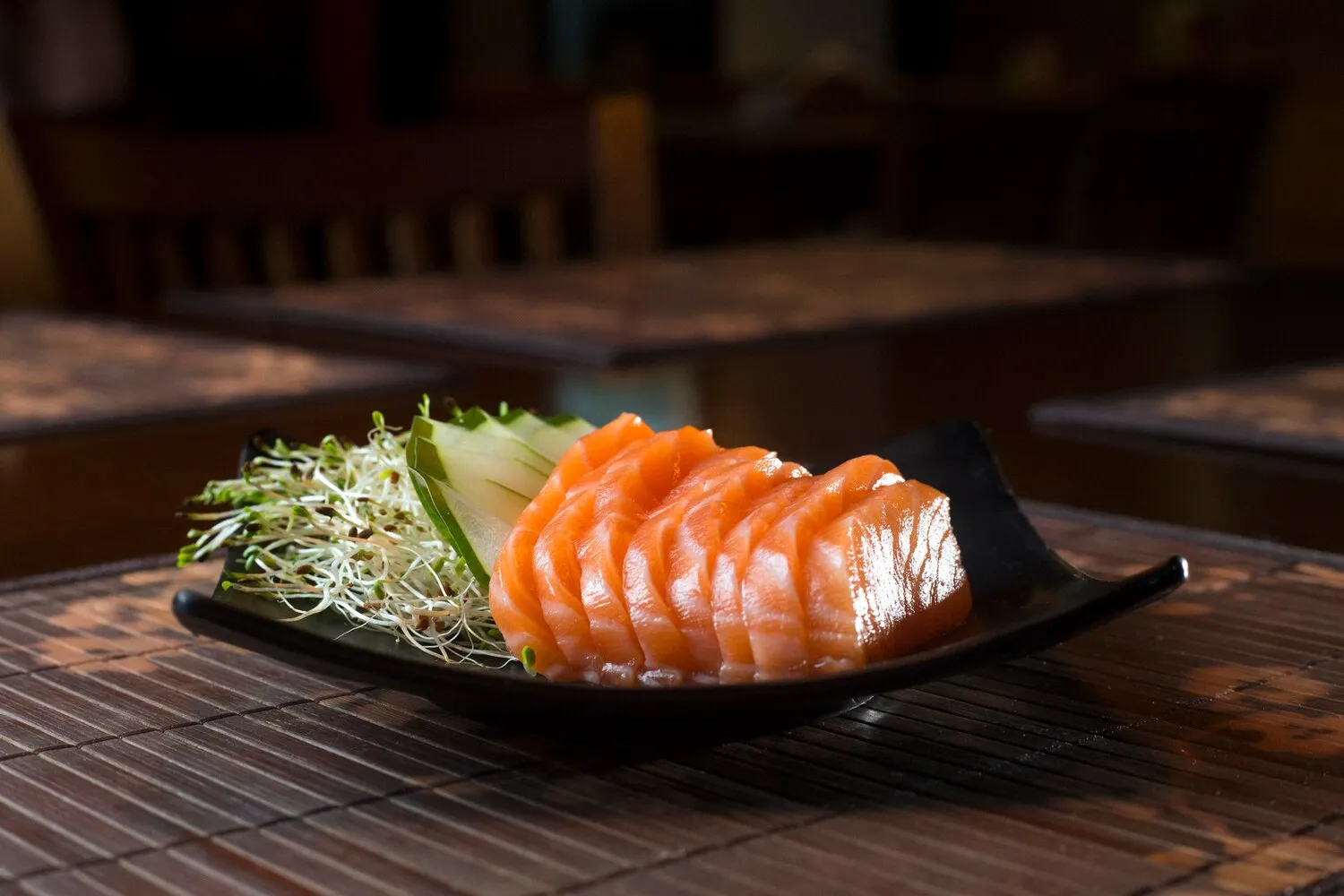
Sashimi
Thinly sliced raw fish, typically salmon and tuna.
Nutrition Facts
* The % Daily Value (DV) tells you how much a nutrient in a serving of food contributes to a daily diet. 2,000 calories a day is used for general nutrition advice.
Restaurante Nippon House
The origins of sashimi can be traced back to Muromachi period (1336 to 1573). Before refrigeration, sashimi developed as a method of preserving fish, where carefully slicing and preparing the fish extended its shelf life and masked any slight off-flavors, especially in inland areas.
Sashimi is deeply rooted in Japanese culture and embodies principles of simplicity, freshness, and respect for ingredients.
Presentation
The aesthetic presentation of sashimi is just as important as the taste. The arrangement on the plate, known as 'mori-tsuke', showcases the natural colors and textures of the fish, often with garnishes like shiso leaves, daikon radish, and seaweed to enhance the visual appeal and provide complementary flavors.
Seasonality
In traditional Japanese cuisine, seasonality is crucial. Sashimi is often prepared with fish that are in season, as their flavor and texture are considered to be at their peak during specific times of the year. This reflects a deep connection to the natural cycles.
Etiquette
There are certain etiquette guidelines associated with eating sashimi. It is considered polite to dip the fish lightly into soy sauce, avoiding excessive soaking. Using chopsticks to handle the sashimi and avoiding double-dipping into the soy sauce are also customary practices.
Sashimi offers a pure, delicate flavor experience focused on the natural taste and texture of the seafood.
The primary flavor is the clean, fresh taste of the fish itself. High-quality sashimi should be free of any fishy odor. Tuna offers a richer, meatier flavor, while salmon has a buttery, slightly sweet taste. The accompanying soy sauce adds umami and saltiness, while wasabi provides a sharp, pungent contrast. Ginger cleanses the palate between bites.
Choosing Fresh Fish
Look for fish with vibrant colors, a firm texture, and a fresh, clean smell. Avoid fish that appears dull, slimy, or has a strong odor.
Slicing Technique
The precise slicing technique is crucial for achieving the right texture and flavor. Different cuts, such as 'hira-zukuri' (rectangular slices) and 'sogi-giri' (thin, angled slices), are used for different types of fish to highlight their individual characteristics.
Wasabi Usage
Use wasabi sparingly, as its strong flavor can easily overpower the delicate taste of the fish. A small dab is usually sufficient. Mixing wasabi directly into the soy sauce is generally discouraged.
Explore additional Sashimi dishes and restaurants
Explore SashimiDiscover top dining spots and culinary experiences in Castanhal.
Explore CastanhalLearn more about the food culture, restaurant scene, and culinary heritage of Brazil.
Explore Brazil
